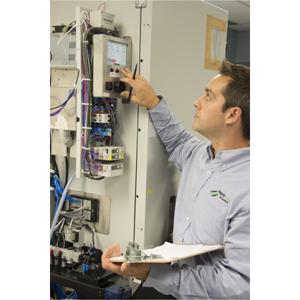blog
November 19, 2013 | Source: Rapid Micro Biosystems, Inc.
Automatic but not Alternative: The Growth Direct's CCD Imaging Technology
POSTED BY Rapid Micro Biosystems | 6 minute read
November 19, 2013 | Source: Rapid Micro Biosystems, Inc.
POSTED BY Rapid Micro Biosystems | 6 minute read
 While most pharmaceutical manufacturers are still using a tedious, century-old technique for colony enumeration, rapid methods have been around for quite a while. However, many of these methods involve alternative techniques to detect micro organisms that create as many problems as they solve. They may be fast, but they destroy samples, produce quantifiably incomparable results and make regulatory compliance a real hassle.
While most pharmaceutical manufacturers are still using a tedious, century-old technique for colony enumeration, rapid methods have been around for quite a while. However, many of these methods involve alternative techniques to detect micro organisms that create as many problems as they solve. They may be fast, but they destroy samples, produce quantifiably incomparable results and make regulatory compliance a real hassle.
On the other hand, the Growth Direct™ System simply automates the processes already in place at micro QC labs around the world. Final results are equivalent to the traditional method, and samples are preserved for microbial identification – but results are available in about half the time. This is all made possible by proprietary imaging that leverages charged-couple device (CCD) technology.
A CCD is a device that allows for the movement and manipulation of electrical charges. In addition to medical imaging machinery, CCDs are commonly found in fax machines, digital cameras and other products, which require high-quality image data.
CCD sensors – like the ones used in the Growth Direct System – contain photoactive and transmission regions. When an image hits the photoactive region, tiny, arrayed capacitors accumulate electrical charges proportional to the intensities of light at their locations. These capacitors then pass their charges into an amplifier within the transmission region, which converts them to voltages. Finally, those voltages are digitized and recorded to produce images.
While colonies must typically grow into the millions before the naked eye can detect them, the Growth Direct System is able to see colonies with as few as around 100 cells. The ability comes from the imaging technology. Every living cell emits a native fluorescence as a result of excitation by a light source. The Growth Direct System can detect this autofluoresence through a large, 2-dimensional CCD panel. Once a cassette has been incubated for a specified amount of time, it is placed under this panel and illuminated by a light of a certain frequency. Autofluorescing microcolonies emit light that is captured by the CCD cells. Imaging algorithms convert the light to grayscale pixel values and determine which groups of pixels might represent growing colonies. Thus, colonies still invisible to the human eye can be counted after just a few hours of incubation, and without the use of reagents.
The Growth Direct System’s imaging technology is not only growth-based – it requires no reagents. Samples are prepared identically to the traditional method, and all microbes are preserved during enumeration. When a cassette registers an out-of-specification level of growth, microbiologists can quickly conduct further testing on its contents. Manufacturers can ultimately save days or even weeks on both colony enumeration and identification, and OOS investigations are far more likely to capture contaminants before they spread.
The Growth Direct System’s imaging technology has been successfully reviewed with regulators. Automation alone reduces the likelihood of human error, and the similarity to traditional methods makes it easy for manufacturers to comply with the pharmacopeia. Because the Growth Direct™ System simply automates the current method for colony enumeration, only the following validations are required:
Overall, the Growth Direct System’s imaging technology replaces the human eye with faster, CCD imaging colony enumeration. Detection can produce initial results starting within hours – not days – and final results are available in about half the time of the traditional method. Given the fierce competition and slim margins in the pharmaceutical industry, manufacturers who adopt these methods can gain a serious edge over their competitors.
Discover more everything you need to know about automated rapid detection and enumeration today by downloading our free guide here.